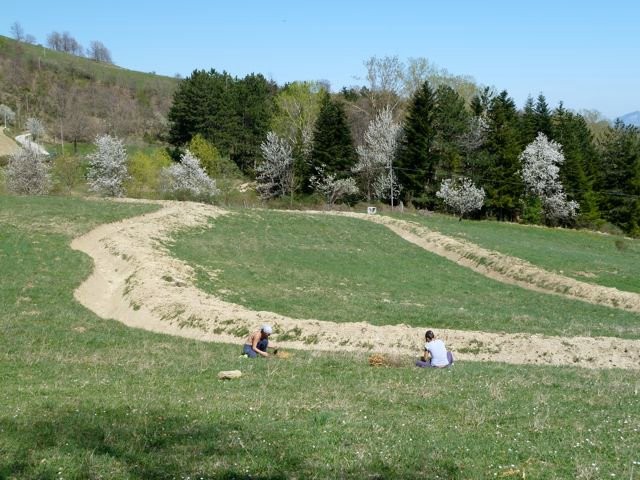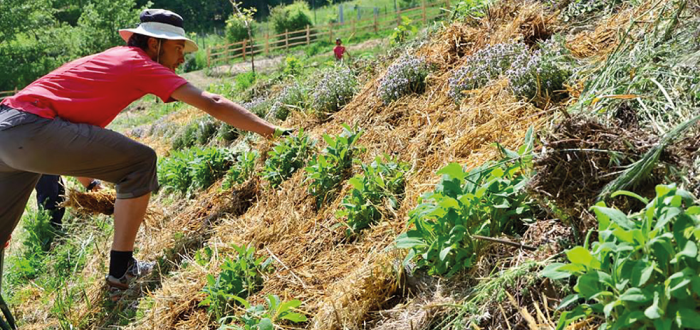The use of swales in Permaculture
The concept of swale has very ancient origins. In Italy they were used in agriculture also by Etruscans and Romans.
Nowadays swales are are known only by niche or permaculture experts, thanks to whom swales have been reintroduced in Italy in recent years.
What is a Swale?
Usually a swale looks like a common ditch with the only difference that it has a berm on the downhill side on which trees or bushes are planted.
Please note that a swale IS NOT A DRAINING DITCH.
Swales are designed along an elevation contour line with a maximum slope of 1:400.
Unlike draining ditches, which convey water to conduct it away quickly from the fields, swales gather water and allow it to seeps into the ground and refill the phreatic layer.
The wider is the angle of rain impact, the faster is the water speed and the erosion process. On the contrary, if the angle is perpendicular, the water is less dangerous because it is slower and weaker.
What’s its purpopuse?
A swale is useful because it gathers water both in the ground and the phreatic layer, so it allows to plant with no need of irragation systems.
Swales also helps to collect loamy material and it prevents erosion. If filled with mulch, a swale provides nutrients to plants on the downhill side, as well as compost which is slowly and gradually absorbed by the ground.
How to create a swale
A swale is a ditch designed along an elevation contour line, so first of all, it is necessary to mark the line on the ground with stakes. Then you need to decide its size, for example a 30-cm-deep swale is enough for a small garden with little slope. However, it should be 1 meter wide in order to gather the most rain as possible. Finally, its length depends on the size of the garden, but it should be at least one meter.
The dirt is piled on the downhill side of the swale with no need to compact it. It will become the ground for our plants.
Vietnamese farmers usually fill the swale with little water and then level the bottom perfectly so that the water disperses evenly.
Another important aspect of making a swale is to plan for passive overflow. The best way to do this is to have a sizeable spot that is perfectly level and below the top of the berm where water can overflow into a safe place, either a pasture or another swale or a water catchment like a pond or damn.
What’s next?
The next step is applying mulch to the berm on the downhill side and plant it. You will need plants that contribute to nitrogen fixation such as lupin, peas, horse beans, etc. Then add seven layers of the food forest and you will have a very simple method to water you plants with no irrigation systems.
At our Farm all swales (45 in total – 2,2 km) are planted with fruit trees, bushes, local plants and green manure.
Newsletter
ARGOMENTS
- Activities (8)
- Farm products (4)
- Fattoria dell'autosufficienza (39)
- News (63)
- Our models (14)
- Permaculture (23)
- Senza categoria (2)
- Things to do (22)
- Tourist attractions (15)




